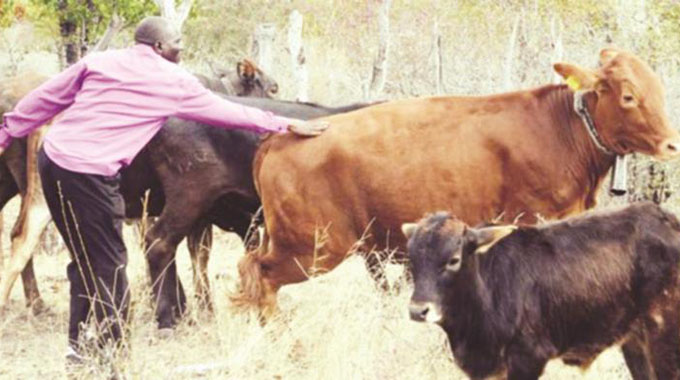Traditional knowledge and IP: Options & alternatives

Aleck Ncube, Intellectual Property
MODERN biotechnologies allow new and novel uses of biological resources, giving additional value to biodiversity, genetic resources and traditional knowledge. Traditional knowledge (TK), also called indigenous knowledge, is held by indigenous populations. TK is often communal, has been disclosed, and has been passed on from previous generations. The very nature of TK, therefore, does not meet the criteria for intellectual property in the current structure of IP regimes around the world. Hence, some view the use of TK in modern science as a form of bio-piracy, which is the unfair acquisition of biological resources and/or associated know-how.
The core of the bio-piracy problem is not patenting inventions derived from TK, but rather bio-piracy is unfair acquisition (misappropriation) of knowledge and the inequitable distribution of benefits derived from developing such information into valuable commercial products. Provided that TK is given voluntarily and that fair compensation is paid to the group who owns the information, it is not the use of TK in a patent that is inherently wrong. Therefore, the question becomes one of how to provide for equitable benefit sharing of TK that finds its way into patent applications and is subsequently commercialised.
Policymakers ought to formulate methods for equitable access to the TK held by indigenous societies and for compensating its owners. However, this issue involves a delicate balance: access should be granted only via authorised permission, yet the price that is assessed for permission to bio-prospect should not be so high that it dissuades companies and individuals from seeking access.
International agreements such as the Convention on Biological Diversity (CBD) and the International Treaty on Plant Genetic Resources (ITPGR) provide a broad framework for protecting and utilising genetic resources. Zimbabwe is a signatory to these agreements. There is a new global regime driven by access and benefit-sharing (ABS) systems, applying to research carried out for either scientific or commercial purposes. ABS involves accessing organisms, or parts thereof, and related TK, that are obtained (accessed) from a country that is party to the CBD.
In addition, other international treaties, accords, and agreements have also added new legal ABS regimes legislation through the acquisition and use of biological material and related information. Each country that is a signatory to the CBD has a responsibility to establish a national focal point for access and benefit sharing.
TK, particularly that which involves a region’s native flora and fauna (biodiversity), is not fully amenable to the legal constructs of intellectual property. Fundamentally, TK is cumulative, communal, and largely undocumented in published literature. Because of these characteristics, TK often neither fulfils various statutory requirements for establishing IP rights, nor clearly establishes whether the ownership of the intellectual property resides with an individual or individuals. It may be exceedingly difficult to identify the original individual inventors or authors, or even the current holders or curators of the knowledge. TK is largely unrecorded but exists as “living” knowledge passed from individual to individual orally or through observation and apprenticeship, it is largely unavailable for consideration by IP offices within the complete repository of human knowledge, that is, within (for example) the statutory definitions of prior art.
But despite these difficulties in applying the criteria for intellectual property to TK, a number of forms of IP rights protection (primarily trade secrecy, geographical indications, plant variety protections, and patents) can be and have been used to establish ownership over specific components of TK. The imperfect fit of TK into the definition of intellectual property has led to two interrelated dilemmas:
– In some cases, those who were not part of the indigenous community from which the TK originated may be able to use, and even to establish ownership over, elements of the TK without acknowledgment of (or recourse to) that indigenous community.
– Those in indigenous communities who do hold TK may not be able to establish ownership, or even gain acknowledgment from others.
To manage the first dilemma, TK should be disclosed, establishing it as prior art in the public domain. There are a variety of strategies to assist in establishing prior art status of TK. For the majority of TK, a defensive disclosure in the public domain (such as via a public registry) can prevent illegitimate IP claims over existing TK. For TK to which IP protections more easily apply (a potentially pharmaceutically valuable plant secondary compound), the TK holders may be able to themselves file applications. In addition, governments should require prior informed consent to be obtained from indigenous communities and/or national authorities when engaging in activities that could lead to the claiming of IP rights based on TK.
To address the second dilemma (maintaining control over TK) indigenous holders of TK can seek to use forms of IP protection. At least initially, most TK approximates a trade secret, and so it might easily be maintained within the original community as a trade secret. However, before the knowledge is more widely disseminated it may be necessary to use other forms of IP protection, including geographic indication, trademarks, plant variety protection, petty patents or utility models, or patents.
Governments may create new forms of IP protection that accommodate the fundamental characteristics of TK (such as under the aegis of sui generis systems of plant variety protection as defined under the Trade-Related Aspects of Intellectual Property Agreement, TRIPS). In addressing the dilemma of control over TK, several issues outlined in the CBD ought to be worked out within national legal systems. Of these issues, the foremost are conditions for granting/gaining access to genetic resources and any TK about them and requirements for equitable sharing of revenues or other benefits that might accrue from the development and use of TK-based technology in markets around the world.
All of these approaches to preserving and protecting TK require a clear identification and attribution of specific TK claims. This can be a complex exercise, but TK is important and often even essential to the survival of indigenous communities.
It may also be an important source of life-giving technological innovation that could benefit millions around the world. The ultimate goal is to develop practical solutions within the legal frameworks that encourage indigenous communities both to sustain their traditions and to equitably share their knowledge with the wider world so that all may benefit.
If bridges can be built between TK and science-based knowledge systems and thereby draw upon the best existing ideas and practices of both, practical solutions to agricultural production, and innovative approaches to the widespread need for health solutions, will become more widely available for the benefit of many around the world, in both developed and developing countries.









Comments